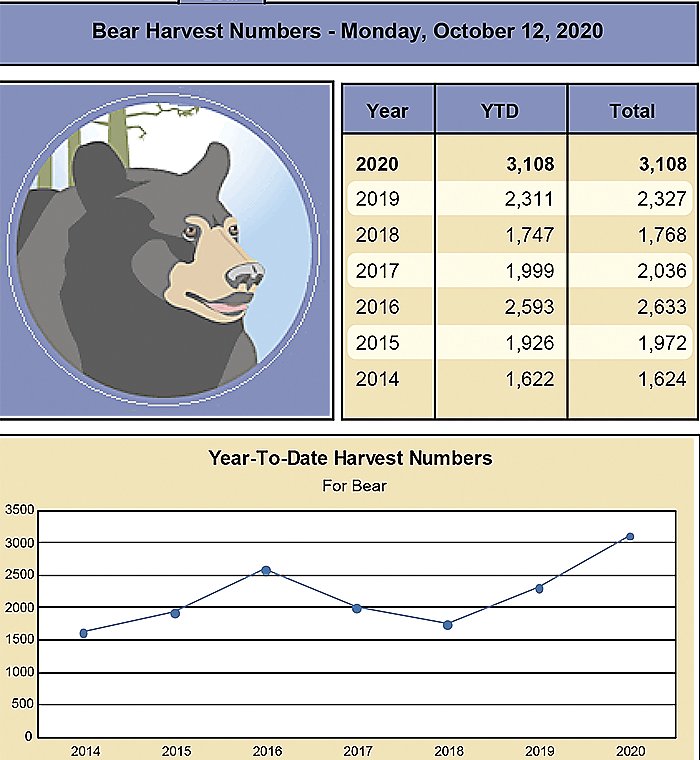Support the Timberjay by making a donation.
Bear registrations highest since 2006
REGIONAL— Bear hunters recently wrapped up their most successful season in more than a decade, with 3,198 bears registered as of Oct. 19, the day after the season ended. That’s the most …
This item is available in full to subscribers.
Attention subscribers
To continue reading, you will need to either log in to your subscriber account, or purchase a new subscription.
If you are a current print subscriber, you can set up a free website account and connect your subscription to it by clicking here.
If you are a digital subscriber with an active, online-only subscription then you already have an account here. Just reset your password if you've not yet logged in to your account on this new site.
Otherwise, click here to view your options for subscribing.
Please log in to continue |
Bear registrations highest since 2006
REGIONAL— Bear hunters recently wrapped up their most successful season in more than a decade, with 3,198 bears registered as of Oct. 19, the day after the season ended. That’s the most since 2006, when hunters registered 3,290 bears. More than 50 percent of hunters harvested a bear this year in the state’s quota zone, an exceptionally high success rate, which was aided by poor natural foods this year.
The high harvest— which was up 50 percent over last year— along with an especially high take of female bears in many areas, is likely to slow efforts by the Department of Natural Resources to rebuild the state’s black bear population. Overall, males made up 56 percent of bear registrations this year, while 44 percent were females. But in many areas, hunters shot more females than males. In the DNR’s Tower work area, for example, females made up 52.6 percent of the 475 bears harvested there.
“From a population growth perspective, that’s not what you want to see,” said Tower Area DNR Wildlife Manager Tom Rusch.
The higher registrations of females are not a surprise. “The high harvest of females we are seeing is exactly what happens during a year of food failure,” said Andy Tri, a biologist with the DNR’s bear research program. “When food production is poor, older reproductive females are far more likely than normal to come into baits.”
According to Tri, the DNR has been using a lower number of permits in recent years to “build resiliency into the population” in anticipation of poor food years. “We know that food failures occur, and we’ve been planning for it,” he said.
The impact of this year’s hunt may be reflected in next year’s permit numbers, although Tri said it’s still too early to tell. “We still need to get all the sex-age structure information from the harvest analyzed for the full picture, so any decisions on the quota won’t be made until the bear committee meeting in February or March,” Tri added.






